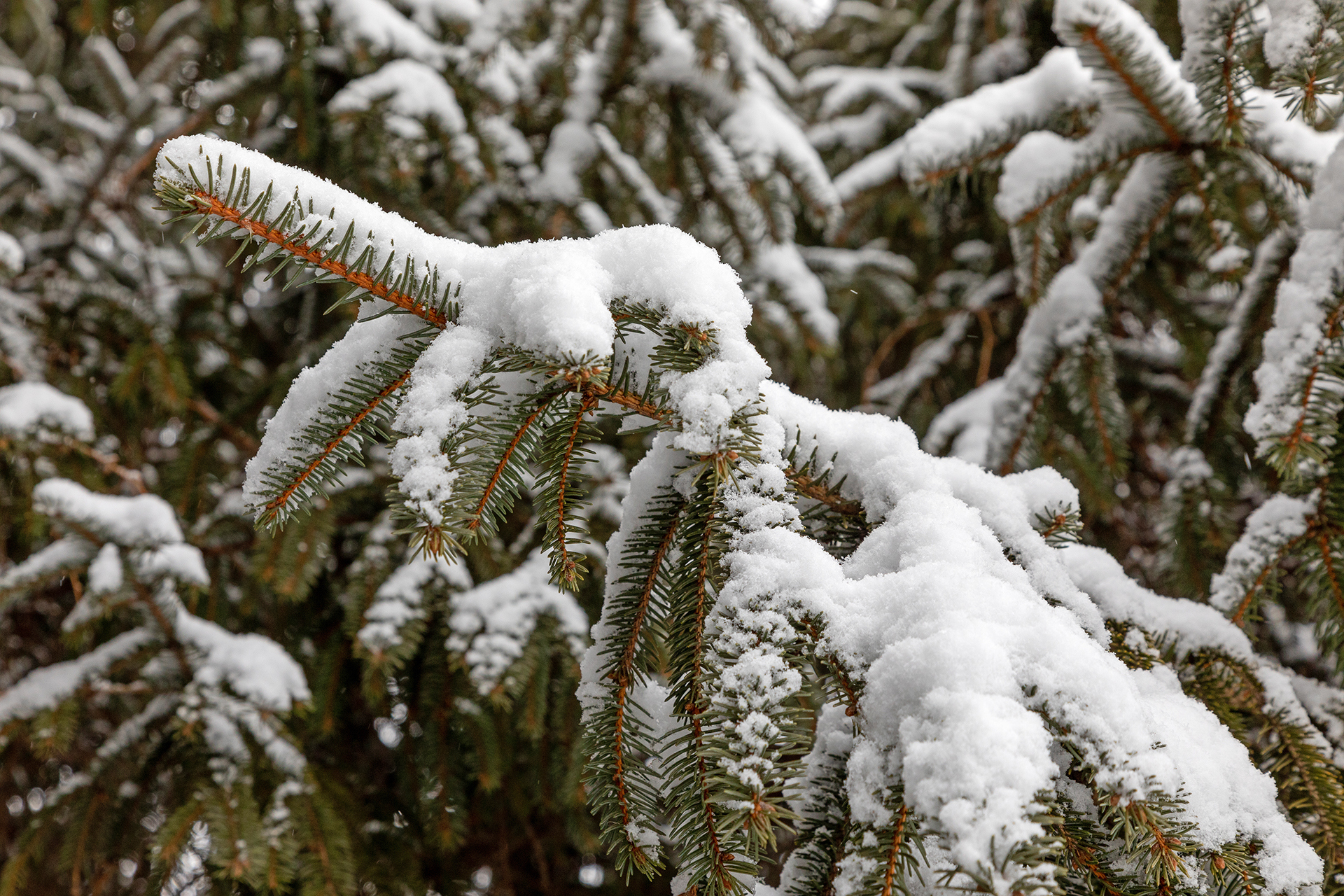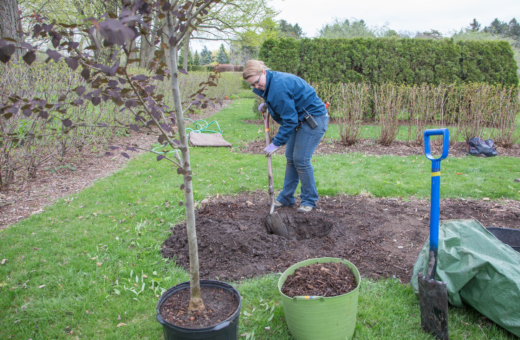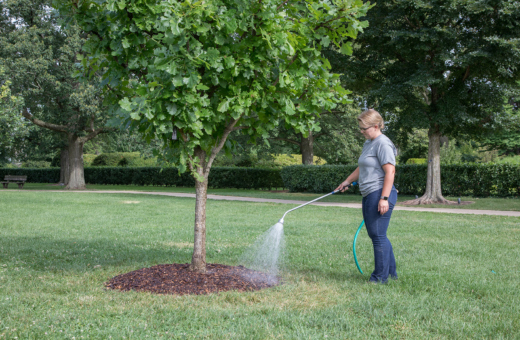Overview
Winter weather can be tough on plants, just as it is for people. You can help your plants make it through and thrive in springtime. Here are some tips from the Plant Clinic.
Spread mulch. A layer of mulch—whether it’s wood chips, leaves, or any other dead plant matter—helps plants through the winter. It insulates the soil against temperature extremes, keeps winter winds from drying out soil, and feeds soil organisms that help plants’ roots. “You can spread mulch any time of year, although it’s easiest to purchase in spring and fall,” said Spencer Campbell, Plant Clinic manager.
Protect against animals. Small shrubs and trees with tender bark are vulnerable to hungry animals such as mice, voles, and rabbits that eat twigs and buds in winter. To keep small animals from burrowing through mulch to the plant, keep the mulch a couple of inches clear of the plant’s trunk. Wrap the trunks of small trees with wire mesh or plastic plant protectors to deter deer. Protect small shrubs from rabbits with a cylinder of chicken wire, well secured in the soil.
Welcome snow. The fluffy white stuff is an excellent insulator, protecting plants’ roots from cold winds and from the freeze-and-thaw cycle. When it melts, it provides water. “Winters with good snow cover are good for plants,” said Sharon Yiesla, plant knowledge specialist. “But we can’t depend on snow as our climate changes and becomes more unpredictable. The best backup is mulch.”
Don’t be alarmed by heavy snow loads. Sometimes the burden of a heavy snowfall will deeply bend the branches of shrubs, especially evergreens. It’s usually best to just leave the plants alone; in most cases, the branches will right themselves when the snow melts. Shaking or brushing the snow off can actually do more damage because wood becomes brittle in cold temperatures.
Tie up arborvitaes. A few kinds of evergreens, such as arborvitaes, have upward-pointing branches that are easily broken by the weight of heavy snow. To prevent this, act before the snowstorm comes. Using something flexible, such as strips of fabric or old pantyhose, loosely tie the branches together so they can’t be bent back. If you forget, it’s best to leave the shrubs alone until the snow melts. Prune out any damaged branches so the plant can grow new ones.
Go easy on salt. Salt and other ice-melting chemicals take a toll on plants by drying out the cells of their leaves and twigs. It’s especially damaging for evergreens, which need water in their leaves in winter. Use salt and other ice melters as sparingly as possible. Don’t use them as a substitute for shoveling; always shovel first and then use only as much salt as needed for safety. Avoid dumping snow that contains salt onto lawns or planting beds or around trees. When the snow melts, the salt will accumulate in the soil and dry out plant roots.
Beware of ice. Ice storms—most common in late winter or early spring, when rain falls and freezes—can be damaging and dangerous. A coating of ice is heavy and can break branches, but it’s best to leave plants alone. “Don’t try to remove ice,” Yiesla said. “It’s too slippery and hazardous for you, and it can break wood that is brittle in the cold.” Wait to prune out damaged branches until the ice melts.
Choose hardy plants. If some plants are badly damaged in winter, they may simply not be suitable for the local climate. Since that climate is changing and becoming more variable, plants that once were considered hardy may no longer be able to handle the extremes of winter. “There are so many wonderful plants, you can still find species that can handle cold and snow without a lot of fuss,” Campbell said.



